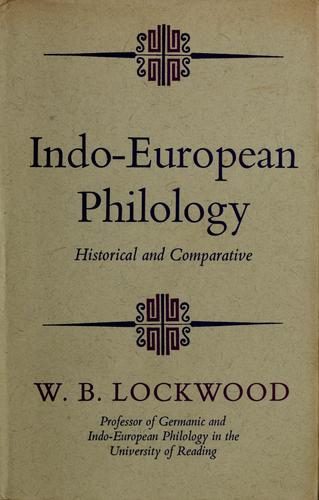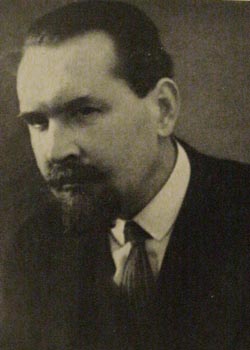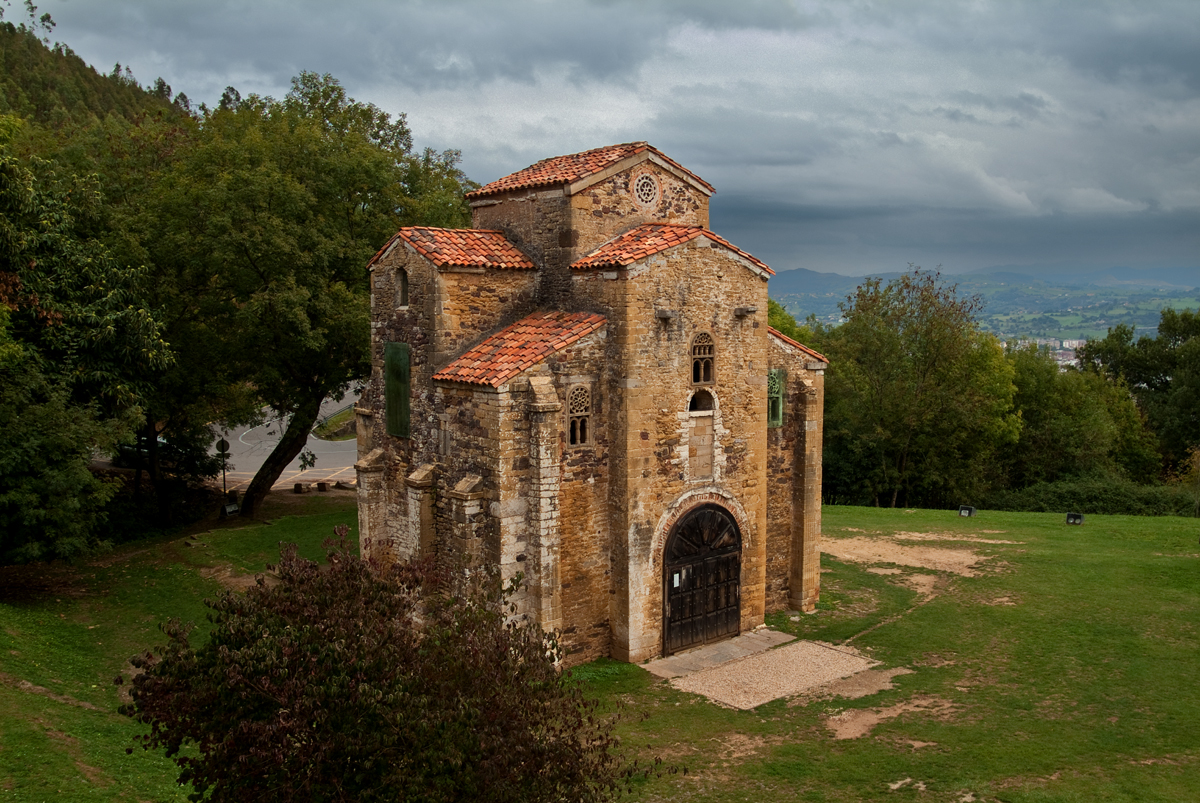|
Emilio Alarcos Llorach
Emilio Alarcos Llorach (22 January 1922 – 22 March 1998) was a Spanish linguist, philologist, and literary critic. He is regarded as one of the most influential Spanish linguists of the 20th century and a leading figure in structural grammar applied to the Spanish language. Early life and education Alarcos was born in Salamanca, Spain. He studied Romance philology at the University of Valladolid and earned his doctorate at the Complutense University of Madrid. He later studied Structural linguistics in Paris, where he was influenced by european structuralist theories. Academic career In 1951, Alarcos was appointed professor of Spanish Language at the University of Oviedo, where he taught for more than four decades. His book ''Gramática estructural'' (1951) is considered a foundational work in applying structuralist methods to Spanish grammar. He also contributed significantly to the study of phonology, syntax, and morphology. Alarcos founded the so-called "Oviedo School ... [...More Info...] [...Related Items...] OR: [Wikipedia] [Google] [Baidu] |
Salamanca
Salamanca () is a Municipality of Spain, municipality and city in Spain, capital of the Province of Salamanca, province of the same name, located in the autonomous community of Castile and León. It is located in the Campo Charro comarca, in the Meseta Norte, in the northwestern quadrant of the Iberian Peninsula. It has a population of 144,436 registered inhabitants (National Institute of Statistics (Spain), INE 2017). Its Área funcional estable, stable functional area reaches 203,999 citizens, which makes it the second most populated in the autonomous community, after Valladolid. Salamanca is known for its large number of remarkable Plateresque-style buildings. The origins of the city date back to about 2700 years ago, during the first Iron Age, when the first settlers of the city settled on the Cerro de San Vicente Archaeological Park (Salamanca), San Vicente hill, on the banks of the Tormes. Since then, the metropolis has witnessed the passage of various peoples: Vaccaei, Vett ... [...More Info...] [...Related Items...] OR: [Wikipedia] [Google] [Baidu] |
Syntax
In linguistics, syntax ( ) is the study of how words and morphemes combine to form larger units such as phrases and sentences. Central concerns of syntax include word order, grammatical relations, hierarchical sentence structure (constituency), agreement, the nature of crosslinguistic variation, and the relationship between form and meaning (semantics). Diverse approaches, such as generative grammar and functional grammar, offer unique perspectives on syntax, reflecting its complexity and centrality to understanding human language. Etymology The word ''syntax'' comes from the ancient Greek word , meaning an orderly or systematic arrangement, which consists of (''syn-'', "together" or "alike"), and (''táxis'', "arrangement"). In Hellenistic Greek, this also specifically developed a use referring to the grammatical order of words, with a slightly altered spelling: . The English term, which first appeared in 1548, is partly borrowed from Latin () and Greek, though the L ... [...More Info...] [...Related Items...] OR: [Wikipedia] [Google] [Baidu] |
Philologists
Philology () is the study of language in Oral tradition, oral and writing, written historical sources. It is the intersection of textual criticism, literary criticism, history, and linguistics with strong ties to etymology. Philology is also defined as the study of literary texts and oral and written records, the establishment of their authentication, authenticity and their original form, and the determination of their meaning. A person who pursues this kind of study is known as a philologist. In older usage, especially British, philology is more general, covering comparative linguistics, comparative and historical linguistics. Classical philology studies classical languages. Classical philology principally originated from the Library of Pergamum and the Library of Alexandria around the fourth century BC, continued by Greeks and Romans throughout the Roman Empire, Roman and Byzantine Empire. It was eventually resumed by European scholars of the Renaissance humanism, Renaissance, ... [...More Info...] [...Related Items...] OR: [Wikipedia] [Google] [Baidu] |
Linguists From Spain
Linguistics is the scientific study of language. The areas of linguistic analysis are syntax (rules governing the structure of sentences), semantics (meaning), morphology (structure of words), phonetics (speech sounds and equivalent gestures in sign languages), phonology (the abstract sound system of a particular language, and analogous systems of sign languages), and pragmatics (how the context of use contributes to meaning). Subdisciplines such as biolinguistics (the study of the biological variables and evolution of language) and psycholinguistics (the study of psychological factors in human language) bridge many of these divisions. Linguistics encompasses many branches and subfields that span both theoretical and practical applications. Theoretical linguistics is concerned with understanding the universal and fundamental nature of language and developing a general theoretical framework for describing it. Applied linguistics seeks to utilize the scientific findings of the ... [...More Info...] [...Related Items...] OR: [Wikipedia] [Google] [Baidu] |
1998 Deaths
This is a list of lists of deaths of notable people, organized by year. New deaths articles are added to their respective month (e.g., Deaths in ) and then linked below. 2025 2024 2023 2022 2021 2020 2019 2018 2017 2016 2015 2014 2013 2012 2011 2010 2009 2008 2007 2006 2005 2004 2003 2002 2001 2000 1999 1998 1997 1996 1995 1994 1993 1992 1991 1990 1989 1988 1987 1986 Earlier years ''Deaths in years earlier than this can usually be found in the main articles of the years.'' See also * Lists of deaths by day * Deaths by year (category) {{DEFAULTSORT:deaths by year ... [...More Info...] [...Related Items...] OR: [Wikipedia] [Google] [Baidu] |
1922 Births
Events January * January 7 – Dáil Éireann (Irish Republic), Dáil Éireann, the parliament of the Irish Republic, ratifies the Anglo-Irish Treaty by 64–57 votes. * January 10 – Arthur Griffith is elected President of Dáil Éireann, the day after Éamon de Valera resigns. * January 11 – The first successful insulin treatment of diabetes is made, by Frederick Banting in Toronto. * January 15 – Michael Collins (Irish leader), Michael Collins becomes Chairman of the Provisional Government of the Irish Free State. * January 26 – Italian forces occupy Misrata, Italian Libya, Libya; the Pacification of Libya, reconquest of Libya begins. February * February 6 ** Pope Pius XI (Achille Ratti) succeeds Pope Benedict XV, to become the 259th pope. ** The Washington Naval Treaty, Five Power Naval Disarmament Treaty is signed between the United States, United Kingdom, Empire of Japan, Japan, French Third Republic, France and Kingdom of Italy, Italy. Japan returns some ... [...More Info...] [...Related Items...] OR: [Wikipedia] [Google] [Baidu] |
Federico García Lorca
Federico del Sagrado Corazón de Jesús García Lorca (5 June 1898 – 19 August 1936) was a Spanish poet, playwright, and theatre director. García Lorca achieved international recognition as an emblematic member of the Generation of '27, a group consisting mostly of poets who introduced the tenets of European movements (such as symbolism (arts), symbolism, futurism, and surrealism) into Spanish literature. He initially rose to fame with ''Romancero gitano'' (''Gypsy Ballads'', 1928), a book of poems depicting life in his native Andalusia. His poetry incorporated traditional Andalusian motifs and avant-garde styles. After a sojourn in New York City from 1929 to 1930—documented posthumously in ''Poeta en Nueva York'' (''Poet in New York'', 1942)—he returned to Spain and wrote his best-known plays, ''Blood Wedding'' (1932), ''Yerma'' (1934), and ''The House of Bernarda Alba'' (1936). García Lorca was homosexual and suffered from Depression (mood), depression after the ... [...More Info...] [...Related Items...] OR: [Wikipedia] [Google] [Baidu] |
Morphology (linguistics)
In linguistics, morphology is the study of words, including the principles by which they are formed, and how they relate to one another within a language. Most approaches to morphology investigate the structure of words in terms of morphemes, which are the smallest units in a language with some independent meaning. Morphemes include roots that can exist as words by themselves, but also categories such as affixes that can only appear as part of a larger word. For example, in English the root ''catch'' and the suffix ''-ing'' are both morphemes; ''catch'' may appear as its own word, or it may be combined with ''-ing'' to form the new word ''catching''. Morphology also analyzes how words behave as parts of speech, and how they may be inflected to express grammatical categories including number, tense, and aspect. Concepts such as productivity are concerned with how speakers create words in specific contexts, which evolves over the history of a language. The basic fields of ling ... [...More Info...] [...Related Items...] OR: [Wikipedia] [Google] [Baidu] |
Phonology
Phonology (formerly also phonemics or phonematics: "phonemics ''n.'' [''obsolescent''] 1. Any procedure for identifying the phonemes of a language from a corpus of data. 2. (formerly also phonematics) A former synonym for phonology, often preferred by the American Structuralists and reflecting the importance in structuralist work of phonemics in sense 1.": "phonematics ''n.'' 1. [''obsolete''] An old synonym for phonemics (sense 2).") is the branch of linguistics that studies how languages systematically organize their phonemes or, for sign languages, their constituent parts of signs. The term can also refer specifically to the sound or sign system of a particular language variety. At one time, the study of phonology related only to the study of the systems of phonemes in spoken languages, but now it may relate to any Linguistic description, linguistic analysis either: Sign languages have a phonological system equivalent to the system of sounds in spoken languages. The buil ... [...More Info...] [...Related Items...] OR: [Wikipedia] [Google] [Baidu] |
Oviedo
Oviedo () or Uviéu (Asturian language, Asturian: ) is the capital city of the Principality of Asturias in northern Spain and the administrative and commercial centre of the region. It is also the name of the municipality that contains the city. Oviedo is located approximately southwest of Gijón and southeast of Avilés, both of which lie on the shoreline of the Bay of Biscay. Oviedo's proximity to the ocean of less than in combination with its elevated position with areas of the city more than 300 metres above sea level causes the city to have a maritime climate, in spite of its not being located on the shoreline itself. History The Kingdom of Asturias began in 720, with the Visigothic aristocrat Pelagius of Asturias, Pelagius's (685–737) revolt against the Muslims who at the time were occupying most of the Iberian Peninsula. The Umayyad conquest of Hispania, Moorish invasion that began in 711 had taken control of most of the peninsula, until the revolt in the nort ... [...More Info...] [...Related Items...] OR: [Wikipedia] [Google] [Baidu] |
University Of Oviedo
The University of Oviedo (, Asturian: ''Universidá d'Uviéu'') is a public university in Asturias (Spain). It is the only university in the region. It has three campus and research centres, located in Oviedo, Gijón and Mieres. History The University of Oviedo was established under the terms and conditions of the will of Archbishop Fernando de Valdés Salas (1483–1568), who was the General Inquisitor under Philip II of Spain, and funded by his estate. In 1574 Pope Gregory XIII granted the papal bull to create the university and in 1604 Philip III issued its charter. It first opened for the teaching of classes on September 21, 1608. The ancient university had three faculties: the Faculty of Arts, which every student had to graduate from in order to continue his training in one of the other; and the Faculties of Theology and Law, sometimes known as the higher faculties. After the French invasion of Spain the ''Historical Building'' of the university was occupied by ... [...More Info...] [...Related Items...] OR: [Wikipedia] [Google] [Baidu] |
Structural Linguistics
Structural linguistics, or structuralism, in linguistics, denotes schools or theories in which language is conceived as a self-contained, self-regulating semiotic system whose elements are defined by their relationship to other elements within the system. It is derived from the work of Swiss linguist Ferdinand de Saussure and is part of the overall approach of structuralism. Saussure's '' Course in General Linguistics'', published posthumously in 1916, stressed examining language as a dynamic system of interconnected units. Saussure is also known for introducing several basic dimensions of semiotic analysis that are still important today. Two of these are his key methods of syntagmatic and paradigmatic analysis, which define units syntactically and lexically, respectively, according to their contrast with the other units in the system. Other key features of structuralism are the focus on systematic phenomena, the primacy of an idealized form over actual speech data, the priori ... [...More Info...] [...Related Items...] OR: [Wikipedia] [Google] [Baidu] |






